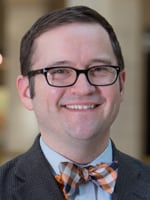The first time board members of Schools That Can Milwaukee and Partners Advancing Values in Education gathered to discuss merging their nonprofit organizations, the path ahead was pretty clear.
From their initial discussions in mid-February, to when an agreement was reached in March, to the May 1 closing, the effort to merge two major players in Milwaukee’s education scene moved quickly. It reflected conviction among board members that the two organizations, both of which have primarily focused on improving leadership in the city’s schools, would be more effective together than separately.

“I’ve always thought of it as we’re in two separate boats rowing in the same river in the same direction,” said Dave Steele, former president and chief executive officer of PAVE.
To go farther and faster in those boats, he said, it made sense to join forces.

This fall, the now-combined organization will relaunch as a new entity with a new name, to be steered by a brand new leader.
Both STCM and PAVE have been operating in parallel streams for years. Originally founded in the late 1980s as a scholarship program, PAVE shifted gears in the 2000s to focus on leadership development and supporting schools’ expansions.
Around 2011, PAVE again recalibrated, with a new focus on improving school governance. STCM was founded in 2010 with a focus on coaching and retaining school leaders.
Over the years, there has been overlap between the two groups. Prior to the merger, the groups both worked in 18 of the 80 schools they served collectively.
There have been a few differences, too. STCM has trained leaders within schools, while PAVE has focused on improving school governance and recruiting school board members.
STCM has worked across all of Milwaukee’s education sectors (traditional district, private choice and independent charter), while PAVE has focused on private choice and charter schools.

For Leslie Dixon, former Schools That Can board chair and now co-chair of the combined organization, the epiphany came at the boards’ first merger exploration meeting.
“I was profoundly struck by the missions of the organizations feeling identical,” Dixon said.
Financially, both have relied primarily on philanthropic support, with STCM receiving a small portion of income coming from earned revenue and PAVE receiving additional income from investments. In 2016, the most recent available tax filings, STCM reported total revenue of $2.6 million. PAVE reported revenue of $1.9 million. PAVE’s assets, meanwhile, have historically been more than double that of STCM.
“The exciting part of the merger is that it wasn’t a strong and weak organization or two weak organizations that needed to be strengthened,” said Abby Andrietsch, co-founder of STCM. “It was actually two strong organizations that, in some ways, had strengths in different places.”
But even for a merger that makes as much sense on paper as STCM and PAVE, the effort to combine the organizations has not been simple. Combining human resources departments, office space, boards, staff members, office cultures – all of it takes time and intentionality, leaders said. A new board was formed with representatives from each of the original boards. PAVE employees have relocated from their former downtown office on West Wisconsin Avenue to STCM’s office in Schlitz Park. A steering committee of employees from both organizations was formed to guide the transition.
“A merger is really complicated and hard, any way it goes,” Andrietsch said. “In some ways, we had one of the simplest mergers. But the abundance of work that had to happen was real.”
A national search continues for the organization’s new leader. Interviews are currently underway, and there isn’t a set timeline for when that leader will take the helm. Rashida Evans, chief program officer of STCM, is serving as interim executive director.

John Grogan, co-chair of the combined organization, said the move to merge made sense for STCM and PAVE, and that other organizations might find similar success in combining their resources.
“My guess is there is opportunity elsewhere in the not-for-profit space in Milwaukee for others to be looking at the same analysis,” he said. “Attracting the right level of leader is not an easy thing to do. Then multiply the number of organizations that need strong, capable leadership and finances, and sometimes are even competing with each other in the same space, it makes sense for organizations to take a step back and look at whether they could harness more opportunity by partnering with others.”
“It’s a question we all should be asking,” Dixon added. “There aren’t enough funds to go around for all we need to do. And we need to make sure that the organizations that are doing good work are doing the best work and having the biggest impact.”

